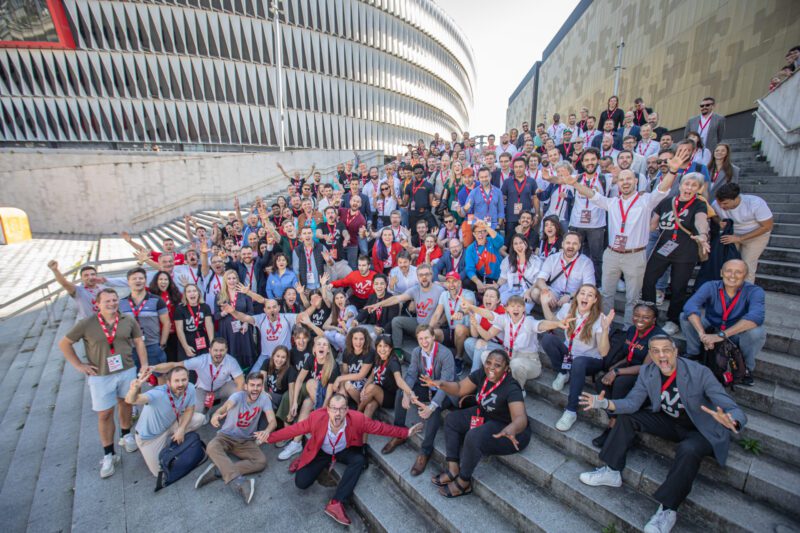The world is digital. The world is virtual. Suddenly ZOOM is a verb (like google) and even my septuagenarian parents know their way around Skype and WhatsApp. I am not sure I should be horrified or pleasantly surprised that my mother knows how to use emojis, appropriately, or suggests we try a Hangout to include our geographically dispersed family! I have watched this shift, and I have read all the new “top ten” lists and advice on how to do digital well … but my question is, are we doing digital right?
Importing habits from the in-person world seems to be the norm and has led to some very snooze-worthy information downloads and cringeworthy virtual meeting moments.
We should all go back to basics and start questioning the assumptions of why we meet. This goes for all virtual meetings, any real-time event where people are stopping their normal workflow to gather on-line, be the purpose to share information, brainstorm or make decisions.
A few ideas I have been exploring in my work to rethink all things digital and meeting:
Do I need this meeting? This is a pet-peeve of mine from the time-before. I felt many meetings were a total waste of my time and there were other venues to ensure the same outcomes. This is even more true today in a virtual world, people can be “at” your meeting and miss everything that is covered because there are so many COVID memes that can be watched while your virtual meeting is happening in the background.
❓Does what you are sharing need to be done in-real-time?
❓Can the information be shared via e-mail?
❓Can you record a video message?
The advantages of this approach are that information will actually be shared with the team and the message will not be open to interpretation. I enjoy videos because I can watch them when I am most focused. I can pause when there is something I need to note down, or I can go back over parts that I really want to ensure I understand.
Remember – we no longer need to do everything in-real-time. This is true for meetings, virtual trainings or even workshops where there is specific information or content that you need to share will all participants.
Does everyone know everyone? The long-maligned ice breaker has been quickly relegated to the scrap heap of impossible in a virtual environment. The result has been video calls where no one has a clue who else is online or why!
✅ When you send out the agenda, send out a meeting participant list with LinkedIn contact information or an on-line biography.
✅ Be specific about who you are inviting and why so participants know what is expected of them and why it is important they attend.
✅ Ask everyone to log-on using their full name / company affiliation.
✅ Establish norms for when to use the camera – for smaller groups demand that, at least for the start of the meeting when doing introductions, everyone has their camera on. Key speakers should always have their camera on.
✅ Spend a few minutes doing simple introductions (e.g.: first name / where you are calling in from / the last crazy project you worked on / your superhero power / your favorite colour). In larger groups ask people to write answers to questions and hold these up to the screen so you can see everyone’s response at the same time.
How can we generate new ideas and be innovative? The virtual break-out groups I have sat in on are best described as terribly run meetings! Even in-person breakouts can be tricky if instructions are not clear, but the advantage of in-person is the presence of a facilitator who can reiterate instructions and make announcements as process issues arise.
✅ Ensure you provide very clear instructions and expectations. Communicate these in writing prior to the breakout group and remind everyone verbally as you start the breakout groups. Your instructions should be time-delineated and include a checklist.
✅ As the organizer or facilitator, try and pop into breakout groups to check-in on progress, or establish a way that breakout groups can communicate with you in-real-time if they are facing issues.
✅ Confirm what collaborative platforms to capture brainstorming you will be using prior to the breakout. The platform isn’t important but ensure everyone has an account and knows how to use it prior the breakout or, have one person whose job it is to capture content.
✅ If you have the resources, you could also identify one person to be the lead in each breakout group. This person could run the brainstorming canvas and keep the discussion on track and on-time.
However, I would challenge the assumption that brainstorming needs to be done in real-time. Setting the conditions and process is important but suggesting that people will be creative and generate ideas in a specific 60 or 90 minutes is unreasonable and does not take into consideration that people find their inspiration at different times and in different scenarios. This is one space that virtual allows people to contribute when they are best positioned to contribute, not at the arbitrary time you scheduled the meeting for. Instead, use a short meeting to set the expectations and then allow for brainstorming to occur over a period of time on your virtual platform of choice, and then reform your breakout groups to review the outcomes of brainstorming and set the next steps.
We must play and explore, we will fail as we try new things, but we will create new ways of interacting. As we do so, we shouldn’t make assumptions that what worked in-real-life will work on-line and we should use this as an opportunity to break the mold and ask questions of everything we do when designing for virtual.
Tabatha has been a digital nomad since before virtual work was a thing! She specialises in exploring methodologies to bring people together to learn and problem solving, specifically designing workshops, conferences, and training. She also custom designs board games as learning and dialogue tools. While a fan of IRL, Tabatha is very excited about breaking the norms of how we and why we meet in this new era of on-line.
Recently she has been filling the long hours of COVID-19 by volunteering as a mentor-nanny for more virtual hackathons than she can remember and for Startup Wise Guys IMPACT OPA. She is also experimenting with Startup Wise Guys on how to take on-line engagement to the next level.



